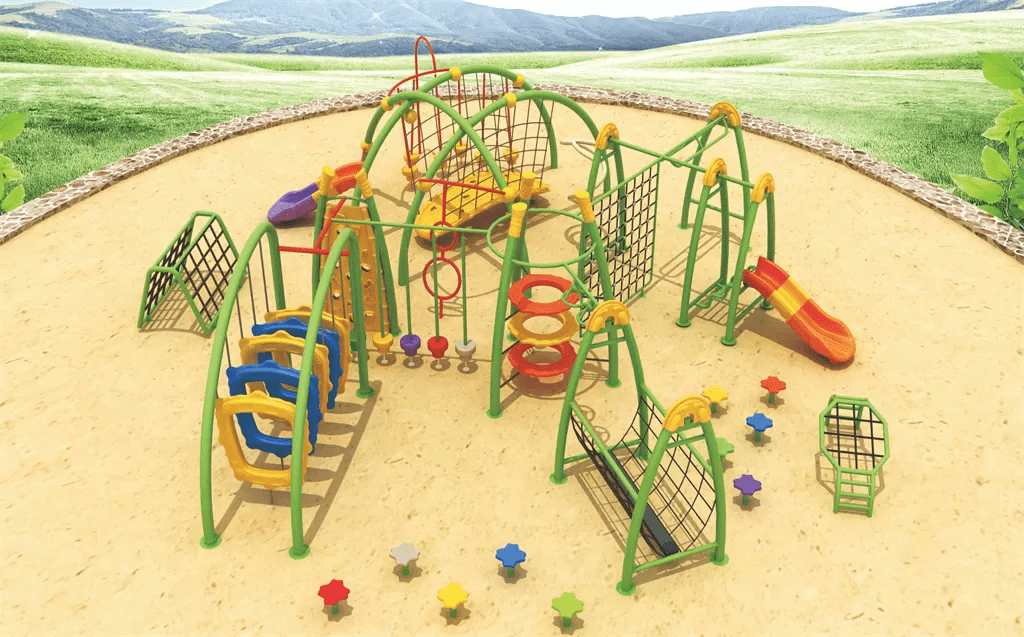Playgrounds have always been a vital part of childhood, offering kids a space to explore, interact, and grow beyond the walls of a classroom or home. Whether it’s a school, community park, or residential housing area, the right playground layout encourages physical health, creativity, emotional development, and social bonding. At the center of every great outdoor play space is well-designed Playground Equipment that is safe, durable, engaging, and age-appropriate.
Today, playgrounds are far more than swings and slides. They’ve evolved into thoughtfully engineered systems designed to help children develop strength, coordination, problem-solving skills, and confidence. But to create a playground that truly benefits children, you must understand the importance of equipment quality, material selection, safety standards, and correct installation.
This article explores the essential elements of choosing, designing, and maintaining modern playgrounds—while highlighting the importance of proper safety rules to ensure a secure and joyful play environment for children.
The Role of Playground Equipment in Child Development
The type and quality of playground equipment dramatically influence how children interact with their environment. Well-designed equipment promotes active play, which is essential for developing motor skills, balance, agility, and physical strength. Children instinctively explore equipment that challenges them—like climbing walls, rope structures, and multi-level play towers—which helps them build resilience and confidence.
Beyond physical development, playgrounds encourage imagination and creativity. Tubes, bridges, playhouses, and themed structures allow kids to create their own stories, role-play, and learn cooperation. Socially, playgrounds become places where children learn to communicate, negotiate turns, solve disagreements, and work together. Emotionally, the thrill of sliding down a tall slide or successfully climbing to the top of a structure builds self-esteem and independence.
Choosing high-quality equipment ensures these benefits can be enjoyed safely and consistently over many years.
Understanding the Types of Playground Equipment
Playgrounds today come in many forms, from traditional swings and seesaws to advanced climbers and interactive sensory panels. Each type of equipment serves a specific developmental purpose and suits different age groups. Younger children need equipment such as smaller slides, gentle climbers, and low platforms. Older children are drawn toward more challenging structures like rope courses, rock walls, tall towers, and multi-level bridges.
Modern playground manufacturers also design equipment to promote inclusive play. This involves ramps, sensory panels, ground-level activities, and wheelchair-accessible equipment so children of all abilities can participate. A good playground blends various elements—physical, imaginative, sensory, and social—to create a well-rounded environment for every child.
Key Factors When Choosing Playground Equipment
Selecting the right equipment requires understanding the space, the age group of the children, and the long-term durability of the material. One major factor is the material used. High-quality playground equipment typically uses galvanized steel, high-density polyethylene plastics, fiberglass, and engineered wood. These materials resist weather, UV rays, and heavy use, ensuring the equipment remains safe and strong.
Space planning is equally important. A playground should never feel congested. There must be enough room for children to move freely, along with designated fall zones around high structures. Shaded areas, seating for parents, soft surfacing like rubber flooring, and accessible pathways contribute to an enjoyable and practical layout.
Another crucial factor is maintenance. Even the best materials require periodic inspections to check for loose bolts, worn-out surfaces, or cracks. A well-maintained playground ensures long-lasting safety and functionality.
Why Safety Matters in Every Playground
Every playground, no matter how beautiful or modern, needs to prioritize safety. Children naturally push boundaries, test their abilities, and explore equipment enthusiastically. This means the equipment must be designed with risk minimization in mind.
Safety begins with design and manufacturing. Rounded corners, stable foundations, non-slip surfaces, correct height limitations, and impact-absorbing flooring all play a major role in preventing injury. The layout must also allow supervision from all angles, ensuring caregivers can easily see every part of the playground.
This is why understanding Playground Safety Rules is essential. Rules such as proper spacing, safe landing surfaces, age-appropriate equipment use, and regular inspection guides form the backbone of a safe playground. Schools and public parks especially must follow strict safety guidelines that align with international standards like ASTM, EN, and CPSIA.
How Age Groups Influence Playground Design
Children of different ages require equipment that matches their physical capabilities and cognitive development. Toddlers need low-level, soft-edged structures that support basic sensory and motor development. Preschool-aged children enjoy exploratory features like small-scale climbers, short slides, and playhouses that stimulate imagination. Older children seek challenge and adventure, preferring tall climbers, rope nets, obstacle courses, and rotating equipment that push their limits.
Designing with age groups in mind prevents overcrowding and promotes safety. Well-planned playgrounds separate zones for toddlers, young children, and older kids to ensure everyone enjoys an age-appropriate play experience without risk.
The Importance of Surfaces and Installation
Even the best playground equipment can be unsafe if installed poorly or placed on the wrong surface. A suitable playground surface must absorb impact in case of falls. Materials like rubber tiles, EPDM flooring, poured-in-place rubber, and engineered wood fiber are commonly used because they offer shock absorption and reduce injuries.
Professional installation ensures secure anchoring, correct spacing between equipment, proper leveling, and compliance with safety guidelines. DIY installations or inexperienced contractors often overlook critical technical details, which can lead to major safety risks. A high-quality playground is always a combination of strong materials, expert engineering, and proper installation.
Maintenance: The Key to Long-Term Safety and Durability
Playgrounds require regular inspections to remain safe. Over time, exposure to sunlight, rain, temperature changes, and heavy use can cause wear and tear. Routine checks help identify cracks, sharp edges, rust, loose bolts, or damaged flooring before accidents occur. Schools and parks usually establish a maintenance schedule to ensure consistent safety.
Maintenance also involves cleaning, lubricating moving parts, replacing worn components, and refreshing surfaces when needed. A playground that is well-maintained continues to serve families for years and maintains the trust of parents and communities.
Conclusion
Playground equipment is far more than just fun structures—it is an essential tool for children’s development, social interaction, and emotional well-being. Choosing the right Playground Equipment requires careful consideration of material quality, design, age suitability, safety standards, and professional installation. Along with that, following proper Playground Safety Rules ensures children enjoy a secure environment where they can explore, learn, and grow.
Read More From Techbullion



































